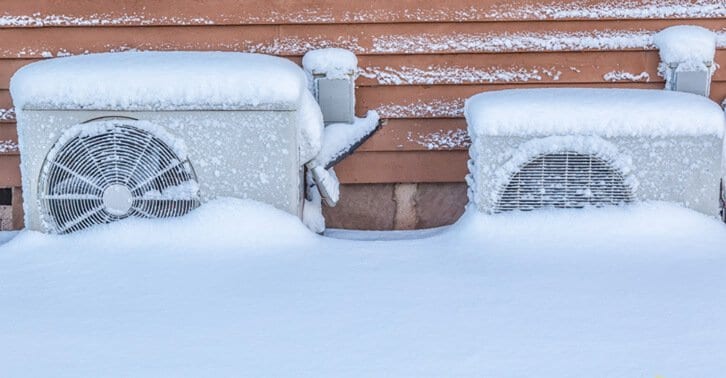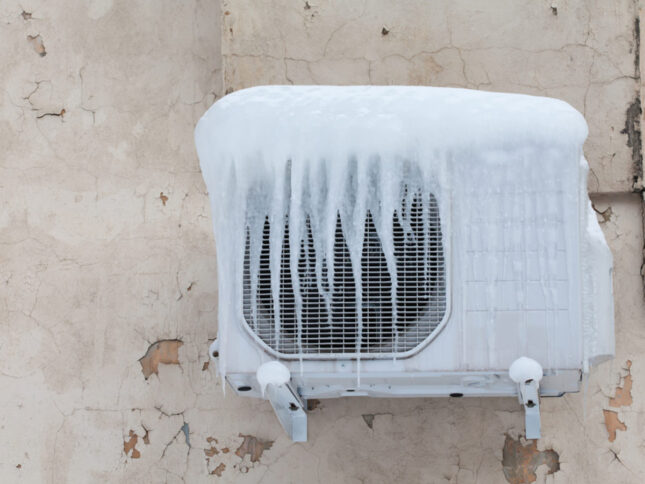What to Handle a Frozen AC Pipe - Critical Measures for Restoration
What to Handle a Frozen AC Pipe - Critical Measures for Restoration
Blog Article
Just about everyone will have their personal conception on the subject of What Causes AC Pipes To Freeze?.

Intro
Discovering that your air conditioner pipeline is frozen can be concerning, specifically throughout hot summer months when you rely upon your ac system the most. Recognizing what to do in such a circumstance is important to stop further damages to your cooling system and guarantee your comfort inside.
Understanding the Causes
Several aspects can add to the freezing of an air conditioning pipe. Comprehending these reasons can assist you deal with the issue effectively.
Lack of Airflow
One typical source of a frozen a/c pipe is inadequate airflow. When the air flow over the evaporator coil is limited, it can trigger the coil to drop below freezing temperature, bring about ice formation on the pipe.
Reduced Refrigerant Levels
Inadequate refrigerant levels in your air conditioning system can also cause a frozen pipeline. Reduced refrigerant levels can create the stress in the system to go down, leading to the cold of wetness on the evaporator coil.
Cold Weather Conditions
In cooler environments, freezing temperatures outside can add to the freezing of air conditioning pipes. If your a/c unit is not correctly shielded or if there are leakages in the ductwork, cool air can infiltrate the system, creating the pipe to freeze.
Dirty Air Filters
Unclean or clogged up air filters can restrict air flow in your air conditioner system, causing different issues, consisting of a frozen pipeline. It's necessary to replace or cleanse your air filterings system regularly to guarantee appropriate air flow and avoid ice buildup.
Indicators of a Frozen Air Conditioning Pipe
Recognizing the indicators of a frozen air conditioning pipeline is essential for prompt activity.
Reduced Airflow
If you notice a substantial reduction in air movement from your vents, it might suggest an icy pipeline.
Ice Buildup on the Pipe
Visible ice accumulation on the refrigerant line or the evaporator coil is a clear indication of an icy a/c pipeline.
Weird Sounds from the Unit
Unusual audios, such as hissing or gurgling, originating from your air conditioning system can signify that there's ice present on the pipe.
Immediate Actions to Take
When confronted with a frozen air conditioner pipeline, it's vital to act quickly to avoid additional damage to your cooling system.
Turning off the a/c
The initial step is to turn off your ac system to stop the system from running and exacerbating the issue.
Checking for Blockages
Inspect the area around the indoor unit for any type of blockages that may be blocking airflow, such as furnishings or drapes.
Defrosting the Pipe
You can make use of gentle techniques like placing towels taken in warm water around the icy pipe to help thaw it gradually.
Safety nets
Taking preventive measures can help stay clear of future incidents of an icy air conditioner pipe.
When DIY Methods Fail
If your efforts to thaw the pipeline or address other issues are not successful, it's time to call a specialist.
Value of Hiring a Professional HVAC Technician
A qualified HVAC specialist has the proficiency and tools necessary to detect and repair issues with your AC system securely and effectively.
Regular Maintenance Checks
Arrange normal upkeep talk to a specialist HVAC specialist to make sure that your air conditioner system is running effectively.
Changing Air Filters
Routinely change or cleanse your air filters to prevent airflow constraints and keep optimal efficiency.
Insulating Exposed Pipes
If your a/c pipelines are exposed to chilly temperatures, consider shielding them to prevent cold throughout cold weather.
Seeking Professional Help
If DIY approaches fall short to settle the concern or if you're unclear regarding exactly how to proceed, it's finest to look for help from a certified HVAC specialist.
Verdict
Handling an icy air conditioning pipe can be a discouraging experience, yet understanding just how to respond can assist minimize damage and bring back comfort to your home. By comprehending the causes, identifying the signs, and taking timely action, you can efficiently resolve the issue and prevent future occurrences.
What to Do If Your AC Line Is Frozen
Make Sure All Supply and Return Air Vents Are Open
If you notice problems with airflow, the first thing you should do is check your supply and return vents. Supply vents distribute clean, conditioned air throughout your home. As this air becomes stale, it’s pulled into the return vent, where it’s reconditioned before being sent back out through the supply vent.
When these vents are closed, air won’t flow in the home. Before examining your AC, check the vents in every room and ensure they’re all open.
Check for a Dirty Air Filter
Another possible cause of limited airflow is a dirty air filter. Your air conditioner’s filters catch elements you don’t want to breathe in, such as dirt and dust. Over time, filters can become clogged, ultimately blocking air from flowing in and out. The lack of airflow can then cause the entire coil to freeze and will completely restrict any air from moving through it. The AC may need to be powered off for one to two days to allow the coil to thaw after replacing the filter to allow proper functioning of the unit. This debris can also accumulate on your AC’s evaporator coil, requiring a more serious repair. In general, air filters should be cleaned regularly (about every two weeks).
Assess Your Outdoor Unit
In addition to checking your AC, assessing the outdoor unit is a good idea. Also known as the condensing unit, it works with your interior unit to release heat outside. An issue with the outdoor unit can result in rising internal temperatures.
Overgrown Shrubs or Clogged Leaves
From leaves and twigs to shrubs and debris, there’s no shortage of outdoor elements that can accumulate around your condensing unit. When these elements get lodged inside the unit, they can block airflow. Fortunately, removing the blockage can solve the problem.
Sounds of a Broken Fan
Shrubs and leaves aren’t the only things that can impede your outdoor unit’s airflow. If the fan is broken, the unit won’t be able to properly get rid of heat — which means the internal temperature won’t go down. First, make sure the fan is spinning. If it is, check for the following sounds of a broken fan:
Buzzing Rattling Screeching Hissing Clicking Preventative Measures
Nobody wants to deal with a frozen AC line. In addition to causing problems with your air conditioner, they require professional repairs. On the bright side, there are preventative measures you can take to help ensure this issue doesn’t arise in the first place.
https://www.coopergreenteam.com/blog/what-to-do-if-ac-line-frozen

As a reader on What Causes AC Pipes To Freeze?, I think sharing that piece of content was sensible. Kindly set aside a second to distribute this page if you enjoyed reading it. I thank you for reading our article about Why Is Ice On My Outside Air Conditione.
Book A Service Report this page